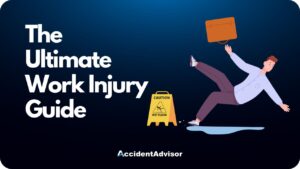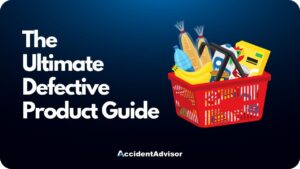Negotiating a pain and suffering claim without a lawyer can be difficult. It can be especially hard to know how to negotiate pain and suffering when you aren’t familiar with how the law defines it. There are two types of damages you need to know about: “special damages,” the economic expenses like medical bills and repairs, and “general damages,” which include emotional pain and suffering.
If you want to make an injury claim without a lawyer, continue reading to learn tips about negotiating with the insurance company. We want to make sure you have the resources and knowledge you need to get the settlement you deserve.
Table of Contents
- How to Claim Pain and Suffering from a Car Accident?
- How Do You Calculate Pain and Suffering?
- Now to Negotiate with Insurance Company for Pain and Suffering
- Manage Your Expectations for Compensation
- Know What Counts as Pain and Suffering
- Support Your Claim with Outside Factors
- Tell a Vivid Story of Your Pain and Suffering
- Describe Your Distress During Recovery
- Link Evidence to Your Pain and Suffering
- Make the “Before and After” Clear to the Adjuster
- Remind the Adjuster You’ll Need More Treatment
- Remember the Adjuster is Not Your Friend
- Get Legal Advice When You Need It
- Car Wreck Settlements for Pain and Suffering
- Does Uninsured Motorist Insurance Cover Pain and Suffering?
- Summary
How to Claim Pain and Suffering from a Car Accident?
There are standards for how to negotiate a car accident pain and suffering settlement that a lawyer normally takes care of for their clients. The non-economic or general damages caused by pain and suffering do not have a concrete monetary value, which can make them difficult to estimate.
The claims process requires you to seek immediate medical attention following a car accident so your physical pain can be documented and calculated based on expenses. However, these visits and receipts also play into your ability to claim damages from emotional pain and suffering, which can be just as significant in your claim.
How Do You Calculate Pain and Suffering?
A car wreck settlement for pain and suffering includes calculable damages like medical bills, lost wages, and automobile property damage. Yet it also accounts for the non-monetary value of pain and suffering, including family trauma.
A lawyer would look at two factors to help you determine the cost of your pain. The first is how much pain you are in and the second is how you could support with evidence.
From this information, they would rate your pain on a scale of 1.5 to 5 and use that as a multiplier with your economic damages to arrive at the total compensation amount.
Now to Negotiate with Insurance Company for Pain and Suffering
Insurance companies will try to pay as little as possible to settle your claim. It’s important to remember that your negotiations with the adjuster are sensitive. They will look for ways to lower your settlement payment or deny you completely.
This is why we put together this list of tips for making successful pain and suffering claims. Since pain doesn’t have an easily determinable monetary value, you will have to make a strong case in defense of your feelings to get the settlement you want.
Here are some tips on how to make it go your way when you start negotiating with the insurance adjuster:
Manage Your Expectations for Compensation
You may not be able to receive the full amount you calculate. It’s important to manage your expectations when it comes to negotiating pain and suffering insurance.
This is why an accurate initial calculation is important. Make sure you keep records and receipts of everything, including medical bills, physical therapy visits, medications, mental health sessions, and car repairs. If you miss work due to your injuries, keep the slips to add lost wages to your calculations.
These costs can only be claimed if you keep detailed records, so it’s crucial that you see accredited professionals for your injuries and document your visits.
Know What Counts as Pain and Suffering
Pain and suffering can be physical or emotional. It’s easier to quantify physical pain, which the law recognizes as anything that causes lasting harm, including scarring, burns, disablement, and other permanent injuries.
Psychological pain and suffering is more difficult to calculate. It involves changes in your mental state or relationships, the pain you feel from missing work, or the stress of trying to recover from injuries or being permanently disabled.
Your car wreck settlement for pain and suffering will depend on your economic losses, so it’s important to document any emotional pain and suffering, such as through therapy visits or a diary.
Support Your Claim with Outside Factors
Outside factors can influence a case in your favor, such as if the other driver was driving intoxicated or in violation of traffic laws. A police report that deemed you to be not at fault could also help.
Note that it works the other way too – evidence that points to your violation could jeopardize your injury claim. This partly depends on whether the accident occurred in an at-fault or a no-fault state.
The severity of the crash impacts your claim as well. If people died, this could be used as evidence for your mental pain and suffering. Severe crashes are almost always compensated more.
Tell a Vivid Story of Your Pain and Suffering
Remember not to downplay your pain and suffering when speaking to the insurance adjuster or to your attorney. Insurance companies will look for any opportunity to shortchange your settlement by claiming that your pain isn’t “that” severe.
Painting a vivid picture of your pain, including emotional details about how you feel and how the crash has affected your mental state, can help your settlement in the long run. It’s important not to exaggerate, but the insurance company will use understatement as an excuse to deny your claim.
Communicate your pain as a story so that the adjuster can understand it as you do.
Describe Your Distress During Recovery
The details of your recovery process could be crucial points in your case, including details about the way the crash has impacted your life both physically and emotionally. These details can be verified by doctors, but they can also be important parts of your personal story.
Anything that resulted from the crash could be used to communicate your pain and suffering. These details could include:
- Insomnia
- Nausea
- Medication side effects
- Pain
- Nightmares
- Fear of driving
- Painful therapy
These details can clarify your suffering to the adjuster and validate the multiplier you used to determine your bottom line in your settlement calculations.
Link Evidence to Your Pain and Suffering
To clarify your pain and suffering, you should gather relevant evidence to support your claim. Possible sources of evidence include:
- Doctor’s notes
- Witness statements
- Driving restrictions
- Injury diary
- Therapist’s notes
Some of these pieces of evidence come from accredited professionals like medical professionals or police. However, they could also include circumstantial evidence such as statements made by witnesses or even your own observations in your diary.
The most important thing is to back up any injuries you claim to have with a piece of evidence, whether it’s an examination by a professional or just the evidence of your own writing.
Make the “Before and After” Clear to the Adjuster
The contrast between your life as it was before and after the accident can be significant in your case. Anything that shows how happy, successful, or healthy you were before the accident compared to now can support the multiplier you used to calculate your pain and suffering.
This could include not only your job performance and mental state but also the testimonies of people around you. Personal injuries can impact your family members, which is another form of pain and suffering. Sometimes, people who are seriously injured lose their romantic partners or strain their relationships with loved ones. Evidence of this can help your case.
Remind the Adjuster You’ll Need More Treatment
If a medical professional has recommend continuing medical treatment, you can use this to support your claim. Remind the adjuster that the expenses already documented are not the only costs you will accrue.
Insurance companies should compensate you for future medical costs and loss of wages even at the time of the negotiations. This is where a doctor’s confirmation of your injuries becomes important. Without it, it will be hard to verify the need for continuing treatment.
Estimated costs of future treatment could greatly improve your settlement, so you should provide your adjuster with the needed evidence to prove that you need it.
Remember the Adjuster is Not Your Friend
Crucially, you should remember that the insurance adjuster is not your ally. They are trained to find any tactical advantage to reduce your settlement or deny your claim. This includes not only your actions during negotiations but even statements you make at the scene of the accident.
Your actions following the crash will be scrutinized, so it’s important not to make a statement or post on social media. Once negotiations begin, remember these tips for how to act around the insurance adjuster:
- Speak professionally
- Use a steady tone
- Don’t act hurried or desperate
- Delay answering questions you don’t know
- Pace your expectations
Get Legal Advice When You Need It
You do not need an attorney to negotiate a claim with the insurance company. However, there are a few reasons you may want to seek legal advice instead of representing yourself.
The more severe the injury, the more likely an experienced injury attorney can help manage the claims process. With more money on the line after severe accidents, the insurance company will be more thorough, requiring you to build a stronger case.
An attorney experienced in negotiating accident claims like yours can help you get sufficient evidence to prove your innocence, verify the other driver’s fault, and accurately support your pain and suffering.
Car Wreck Settlements for Pain and Suffering
The average payment for car wreck settlements, which is around $18,000, is not important in determining the settlement amount for your individual situation. The amount you claim should be determined by the amount of pain and suffering you endured and how well you can verify it with the evidence.
Settlements can be in the millions when the evidence is there. An experienced attorney can help you validate your settlement amount with evidence, gathering reports from medical professionals, police and paramedics, witnesses, and more.
Remember that the more money you expect to claim, the more crucial an injury attorney’s experience becomes.
Does Uninsured Motorist Insurance Cover Pain and Suffering?
Uninsured motorist insurance covers pain and suffering. This means that if the other driver in the crash does not have any insurance coverage, your policy will use your uninsured coverage to compensate you for the physical damages, medical expenses, and pain and suffering. Uninsured motorist insurance includes wrongful death coverage as well.
Negotiations in a case involving an uninsured motorist will be different because your insurance company will be the only party liable for paying your settlement. It will also be easier for you to prove the other driver’s negligence if they are uninsured, which in an at-fault state can work in your favor.
Summary
If you are wondering how to negotiate a pain and suffering claim without a lawyer, you need to know how to define it. Pain and suffering includes not only the injuries you sustained in the accident but also the lost wages and mental suffering that comes with a traumatic experience.
The burden of proof is on you to validate your claims of pain and suffering. This includes providing documentation from a medical professional as well as telling the story of your experiences with vivid honesty. Downplaying your situation will create an opportunity for the insurance adjuster to downplay your settlement as well.
Due to the complexity of car accident injury claims, especially in cases involving severe injuries or wrongful death, you may choose to seek the expertise of a skilled personal injury attorney. However, if you choose to negotiate your own claim, you can use these tips to get the settlement you deserve.

Rocky Horton
Author
Rocky Horton is a health and safety expert from Chapel Hill, NC. He is the founder of AccidentAdvisor and has been featured in Forbes, Bloomberg, and other publications. Learn more.













